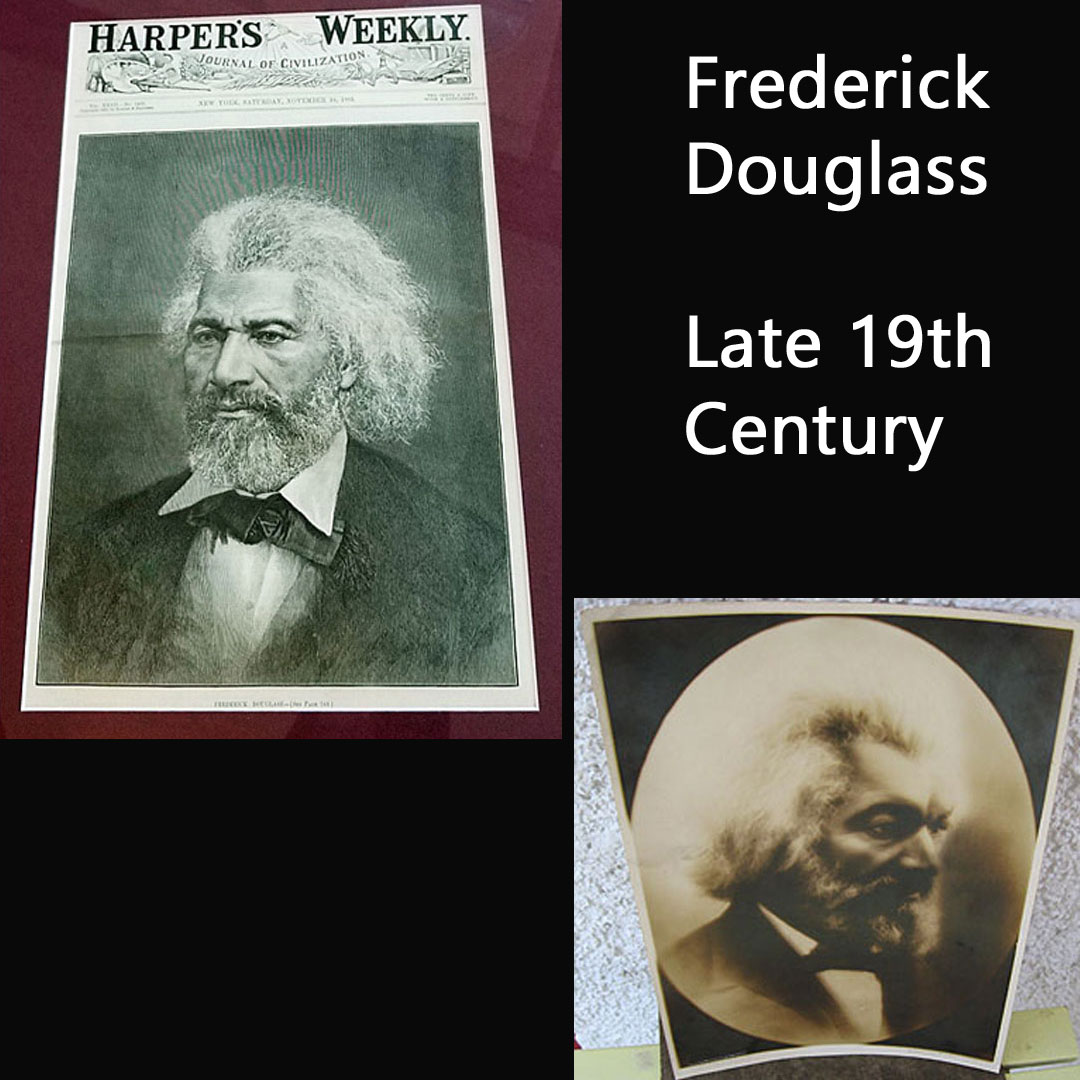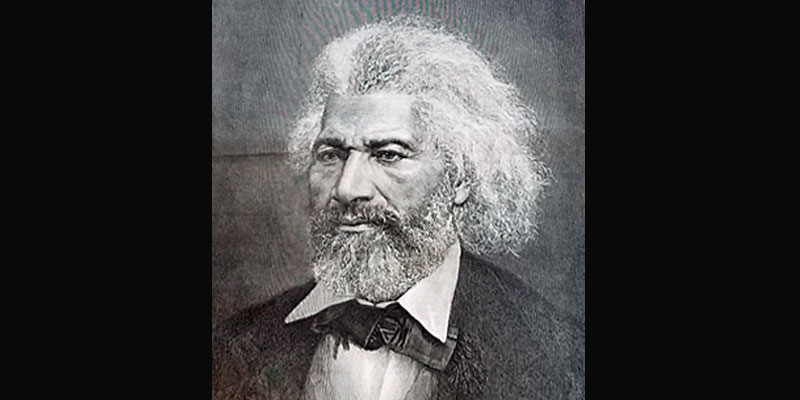African Americans have made extraordinary contributions to the history and culture of the United States as part of the nation and apart from it. This month, Auction Finds presents “28 days (Plus 1)” of this collaborative history. The additional day is intended to break Black history out of the stricture of a month into its rightful place as an equal partner in the history of America. Each day, I will offer artifacts culled from the auction tables and my research, along with the stories they hold.
Feb. 16, 2022
Frederick Douglass portrait & a Douglass drawing on cover of Harper’s Weekly

The portrait of Frederick Douglass (lower right in photo) bears the embossed stamp of C.M. Battey, instructor in the Photographic Division of Tuskegee Institute in Alabama. Battey took over the department in 1916 and stayed there until his death in 1927. He was the school’s “official photographer,” taking pictures of students, faculty and social events.
Since Douglass had been dead more than 15 years before Battey arrived at Tuskegee, this print was likely made from one of his earlier negatives. Battey was born in Augusta, GA, in 1873, and had become well-known for his portraitures by the time he was 27. He owned studios in Cleveland and New York City, taking photos of important Black men of his day, including Douglass. He sold portrait postcards of these men under the title “Our Master Minds.” These types of postcards apparently were very popular at the turn of the 20th century. Battey’s works appeared in Crisis and Opportunity magazines. Read the full story.
For the first time, Frederick Douglass appeared on the cover of Harper’s Weekly (he had appeared inside several times) in November 1883.
Two months prior, he was the main speaker at the 1883 National Colored Convention in Louisville, KY, using his great voice to rally against the injustices still encountered by former enslaved Africans during Reconstruction. Black men from across the country came to the convention, united in their stand with Douglass, the country’s foremost African American abolitionist who himself had escaped slavery on the way to becoming a gifted orator. On this day, September 24, Douglass spoke not just to the men in attendance but also to a country that had “freed” the slaves but still looked upon his people in much he same way it had before emancipation in 1863.
“Frederick Douglass is the most conspicuous American of African descent, and his career is a striking illustration of the nature of free popular institutions,” stated the article. “Born a slave, he is to-day, by his own energy and character and courage, an eminent citizen, and his life has been a constant and powerful plea for his people. Over infinite disadvantage and prejudice, his patience, intelligence, capacity, and tenacity have triumphantly prevailed, and in himself he is a repudiation of the current assertions against the colored race.
“Mr. Douglass’s address at the late Colored Convention showed a comprehension of the situation of the colored people in this country which justified the regard in which he is held, and which explains the leadership that he has held so long.” Read the full story.

